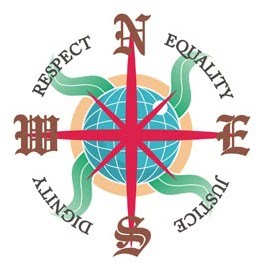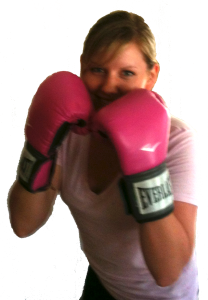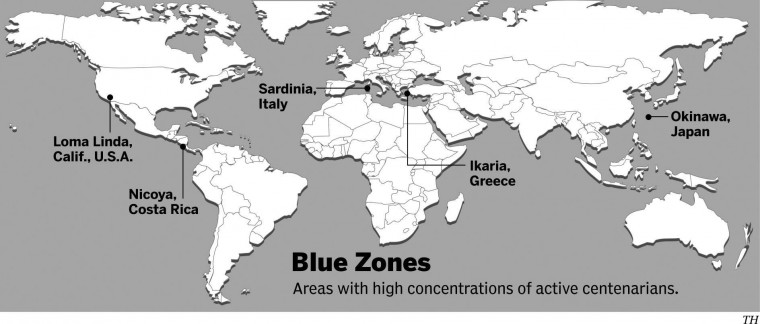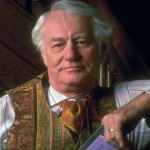 Often in therapy moral dilemmas arise. What should I do here? Is it right for me, for my partner, for my children, for others in my life? Am I being selfish? How can I work this out so I get what I want and others won’t be hurt? Often there is no clear answer to such questions. They become a balancing act between cost and benefit. Self-value ebbs and flows as the balance shits.
Often in therapy moral dilemmas arise. What should I do here? Is it right for me, for my partner, for my children, for others in my life? Am I being selfish? How can I work this out so I get what I want and others won’t be hurt? Often there is no clear answer to such questions. They become a balancing act between cost and benefit. Self-value ebbs and flows as the balance shits.
It often helps to have a kind of moral compass that can help put things in perspective. There are a variety of such compasses. One of the most accepted ones in the field of Psychology today was set forth by Lawrence Kohlberg starting in 1958 while he was a post-grad at the University of Chicago. I have presented a shortened version below. Click here for a printable version: Moral Compass
Kohlberg’s Stages of Moral Development
Kohlberg’s six stages of moral development are grouped into three levels. Each stage provides a new yet necessary perspective, and is more comprehensive, differentiated, and integrated than its predecessors. Each stage and level is more adequate at responding to moral dilemmas than the last.Pre-Conventional
The pre-conventional level of moral reasoning is especially common in children, although adults can also exhibit this level of reasoning. Reasoners in the pre-conventional level judge the morality of an action by its direct consequences. The pre-conventional level consists of the first and second stages of moral development, and are purely concerned with the self in an egocentric manner.
|
Moral Reasoning |
Stage of Moral Development | Personal Perspective |
Social Perspective | Operative Question |
| Pre-Conventional: Judgment is based on personal needs and others’ rules | 1. Obedience and punishment orientation | No separate perspective. Only self & norm are recognized.Rules are obeyed to avoid punishment. A good or bad action is determined by its physical consequences. | Blind egoism | Will I get punished? |
| 2. Self-interest orientation | Sees that others a. have goals and preference b. either conform to or deviate from normPersonal needs determine right and wrong. Favors are returned along the lines of “You scratch my back, I’ll scratch yours.” |
Instrumental egoism | What’s in it for me? | |
| Conventional: Judgment is based on others’ approval, family expectations, traditional values, the laws of society, and loyalty to country. | 3. Interpersonal accord and conformity | Recognize good and bad intentions.Good means “nice.” It is determined by what pleases, aids, and is approved by others. | Social relationships perspective | Am I being a good boy/girl? |
| 4. Authority & social-order maintaining orientation | Able to see abstract normative systemsLaws are absolute. Authority must be respected and the social order maintained. | Social systems perspective | Is it against the law? | |
| Post-Conventional: Judgment is based on abstract, more personal principles that aren’t necessarily defined by society’s laws. | 5. Social contract orientation | Recognizes that contracts will allow persons to increase welfare of bothGood is determined by socially agreed-upon standards of individual rights. This is a morality similar to that of the U.S. Constitution | Contractual perspective | Is this fair to all concerned? |
| 6. Universal ethical principles | See how human fallibility and frailty are impacted by communicationMorality is based upon universal ethical principles and abstract reasoning. | Mutual respect as a universal principle | Is it right? |
In Stage one, individuals focus on the direct consequences that their actions will have for themselves. For example, an action is perceived as morally wrong if the person who commits it gets punished. The worse the punishment for the act is, the more ‘bad’ the act is perceived to be. In addition, there is no recognition that others’ points of view are any different from one’s own view. This stage may be viewed as a kind of authoritarianism.
Stage two espouses the what’s in it for me position, right behavior being defined by what is in one’s own best interest. Stage two reasoning shows a limited interest in the needs of others, but only to a point where it might further one’s own interests, such as you scratch my back, and I’ll scratch yours.In stage two concern for others is not based on loyalty or intrinsic respect. Lacking a perspective of society in the pre-conventional level, this should not be confused with social contract (stage five), as all actions are performed to serve one’s own needs or interests. For the stage two theorist, the perspective of the world is often seen as morally relative.
Conventional
The conventional level of moral reasoning is typical of adolescents and adults. Persons who reason in a conventional way judge the morality of actions by comparing these actions to societal views and expectations. The conventional level consists of the third and fourth stages of moral development.
In Stage three, the self enters society by filling social roles. Individuals are receptive of approval or disapproval from other people as it reflects society’s accordance with the perceived role. They try to be a good boy or good girl to live up to these expectations, having learned that there is inherent value in doing so. Stage three reasoning may judge the morality of an action by evaluating its consequences in terms of a person’s relationships, which now begin to include things like respect, gratitude and the ‘golden rule’. Desire to maintain rules and authority exists only to further support these stereotypical social roles. The intentions of actions play a more significant role in reasoning at this stage; ‘they mean well…’.
In Stage four, it is important to obey laws, dictums and social conventions because of their importance in maintaining a functioning society. Moral reasoning in stage four is thus beyond the need for individual approval exhibited in stage three; society must learn to transcend individual needs. A central ideal or ideals often prescribe what is right and wrong, such as in the case of fundamentalism. If one person violates a law, perhaps everyone would – thus there is an obligation and a duty to uphold laws and rules. When someone does violate a law, it is morally wrong; culpability is thus a significant factor in this stage as it separates the bad domains from the good ones.
Post-Conventional
The post-conventional level, also known as the principled level, consists of stages five and six of moral development. Realization that individuals are separate entities from society now becomes salient. One’s own perspective should be viewed before the society’s. It is due to this ‘nature of self before others’ that the post-conventional level, especially stage six, is sometimes mistaken for pre-conventional behaviors.
In Stage five, individuals are viewed as holding different opinions and values, and it is paramount that they be respected and honored impartially. Issues that are not regarded as relative like life and choice should never be withheld or inhibited. In fact, no single choice is correct or absolute – ‘who are you to judge if they are or not’? Along a similar vein, laws are regarded as social contracts rather than rigid dictums. Those that do not promote general social welfare should be changed when necessary to meet the greatest good for the greatest number of people. This is attained through majority decision, and inevitably compromise. In this way democratic government is ostensibly based on stage five reasoning.
In Stage six, moral reasoning is based on abstract reasoning using universal ethical principles. Laws are valid only insofar as they are grounded in justice and that a commitment to justice carries with it an obligation to disobey unjust laws. Rights are unnecessary as social contracts are not essential for deontic moral action. Decisions are met categorically in an absolute way rather than hypothetically in a conditional way (see Immanuel Kant’s ‘categorical imperative’). This can be done by imagining what one would do being in anyone’s shoes, who imagined what anyone would do thinking the same (see John Rawls’s ‘veil of ignorance’[). The resulting consensus is the action taken. In this way action is never a means but always an end in itself; one acts because it is right, and not because it is instrumental, expected, legal or previously agreed upon. While Kohlberg insisted that stage six exists, he had difficulty finding participants who consistently used it. It appears that people rarely if ever reach stage six of Kohlberg’s model.



